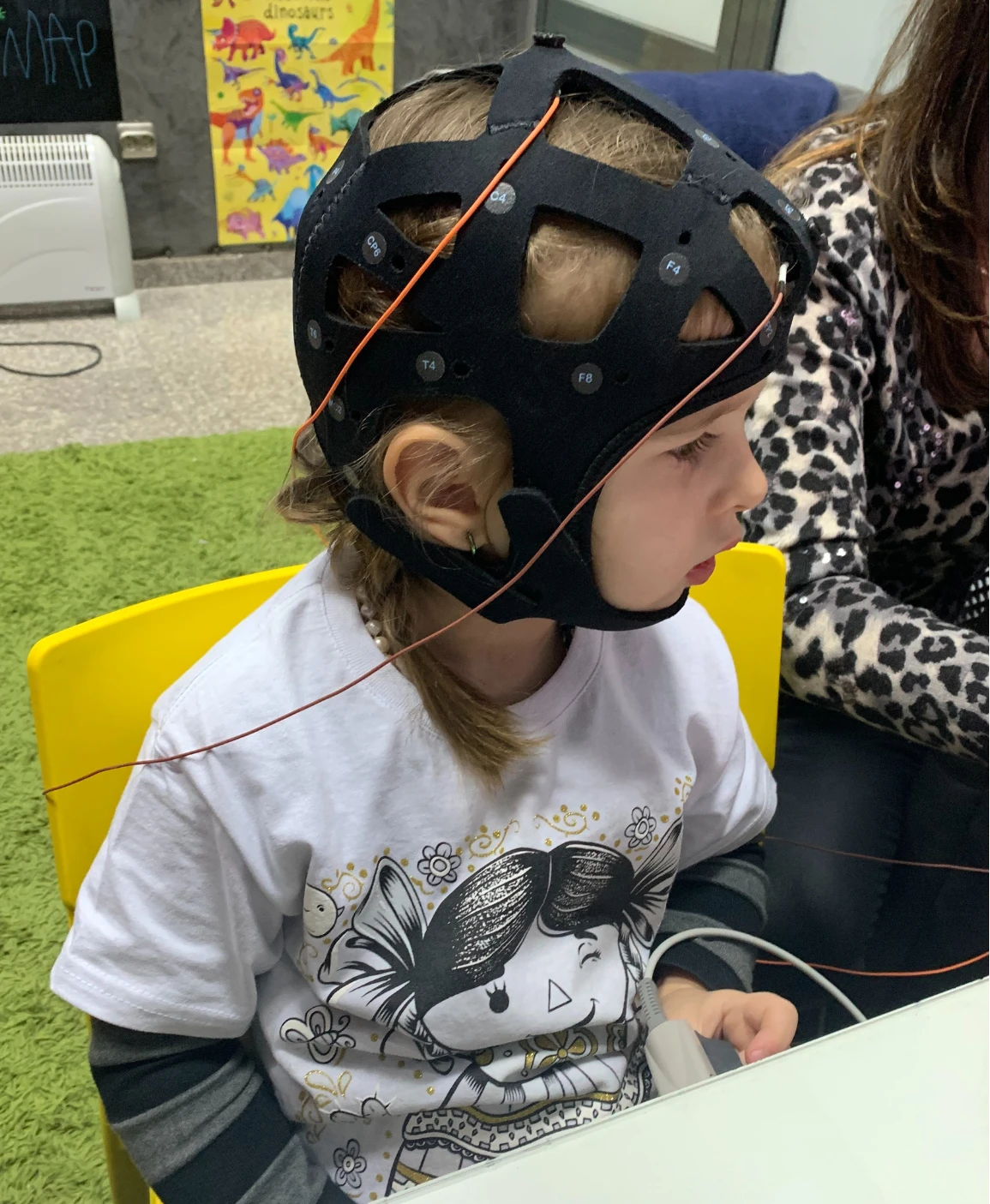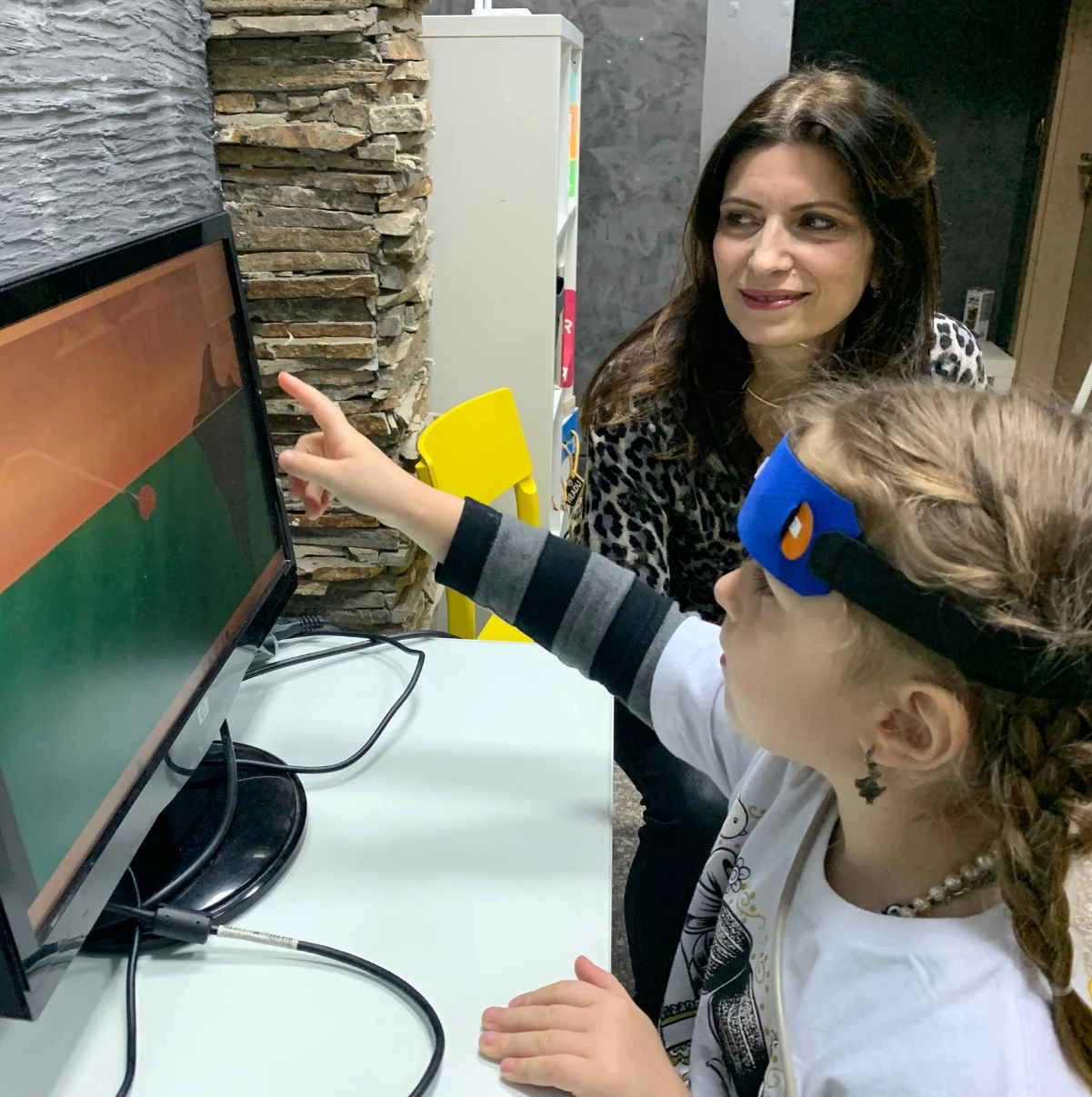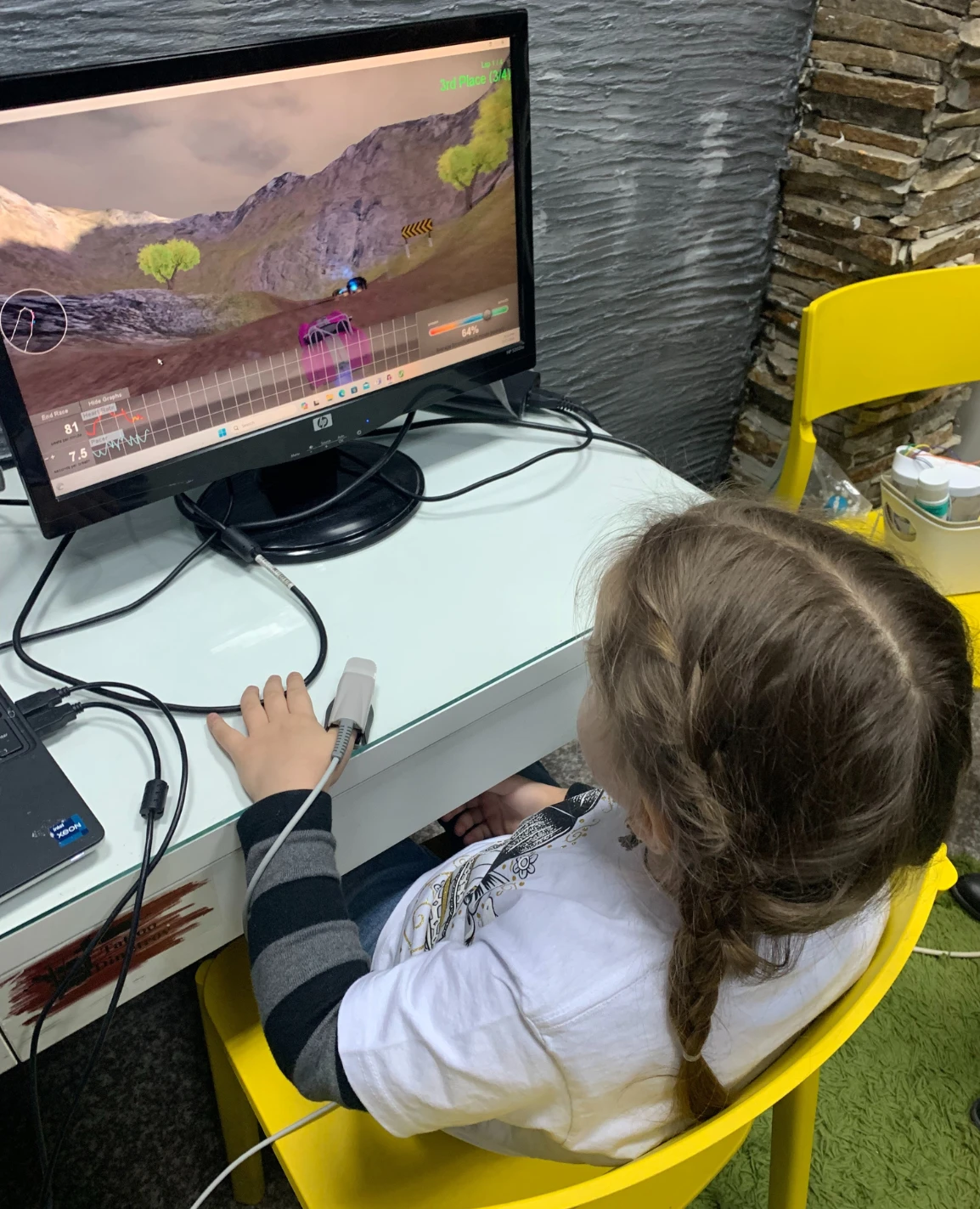
How to improve your child's condition?
Training methods with proven positive effects on child development, both in children with SEN and in "typically developing" children

"Empower Kids Hub" is a place that provides training and opportunities for children to explore own ways of overcoming obstacles and reaching their full potential

EEG-Neurofeedback Training
The EEG (electroencephalograph) measures brainwaves at various frequencies within the brain. A frequency is the number of times a wave repeats itself in one second.
Neurofeedback (NF) is a self-regulation technique in which current EEG parameters recorded from the clients' heads are presented to them via visual, auditory, or tactile modality, with the expectation that they will change these parameters voluntarily or involuntarily to achieve a more efficient functional patterns.

HEG-Neurofeedback Training
HEG (HemoEncephaloGraphy) is a type of neurofeedback training, which aims to increase blood levels and oxygenation, hence improving the metabolic capacity of brain regions. It focuses mainly on the prefrontal cortex, the area behind the forehead that serves as the brain's executive centre.
There are two HEG systems available: pIR (passive infrared), invented by Jeff Carmen, and nIR (near infrared), developed by Herschel Toomim.

Biofeedback Training
Biofeedback is a term that covers all different training methods based on the biological feedback. However, here we describe EEG and HEG as different category (as neurofeedback) and when we talk about biofeedback, we refer to the methods that measure and aim to change physiological parameters such as heart rate (HR), heart rate variability (HRV), peripheral skin temperature, sweаt gland activity etc. Electrodes attached to the skin (or finger sensors) measure these processes and display them on a monitor.

Yoga
The positive effects of yoga have been highlighted by many authors. Various studies have documented the advantages of yoga for specific conditions and disorders. Yoga helps children with Autism Spectrum Disorders to reduce stress and anxiety, and increase balance and coordination (Betts, D. & Betts, W, 2006).

Speech & Language Therapy
Prior to becoming a speech and language therapist, I had extensive experience in the field of special education. Therefore, I currently work with children and young adults who have complex communication needs due to a variety of conditions and developmental disorders. Children with Autism, Down syndrome, speech and language impairments, intellectual disabilities or learning difficulties, and with many other conditions can benefit from one-on-one speech and language therapy sessions.

Transcranial Photobiomodulation (tPBM) using the AVANT Laser
Photobiomodulation (PBM) therapy with the AVANT LZ30 laser uses red and near-infrared light to support brain function by stimulating mitochondria—the cell’s energy producers. This non-invasive method helps restore ATP (cellular energy), reduce inflammation, and promote neurological balance.
